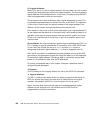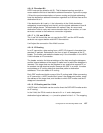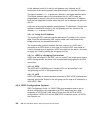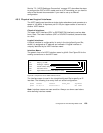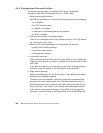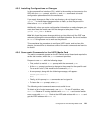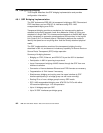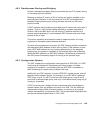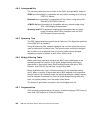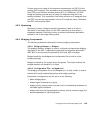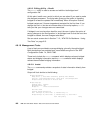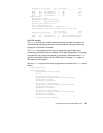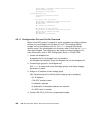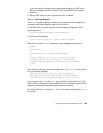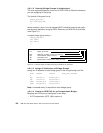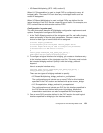144 IBM 9077 SP Switch Router: Get Connected to the SP Switch
4.6.4 Interoperability
The following table gives an overview of the GRFs interoperability features.
FDDI
Frame forwarding is compatible with any station sending and receiving
FDDI LLC frames.
Ethernet
Frame forwarding is compatible with any station using either DIX
Ethernet or IEEE 802.3 frames.
ATM OC-3c
Frame forwarding is compatible with any remote bridge using
RFC-1483 bridging encapsulation.
Spanning tree
GRF transparent bridging will interoperate with any other
bridge (including other GRFs) compliant with the IEEE
802.1d spanning tree protocols.
4.6.5 Spanning Tree
The GRF implementation supports the full Spanning Tree Algorithm specified
in the IEEE 802.1d standard.
Using the spanning tree, network topologies can contain cycles that can be
used as redundant or backup links. The spanning tree controls the bridge’s
flow of traffic over all potential links to prevent packet storms (bridges
repeating a packet or packets to each other, without end).
4.6.6 Bridge Filtering Table
Media card bridge interfaces forward new MAC source addresses to the
operating system for insertion in the global bridge filtering table that is
maintained on the control board. Each bridging media card type (FDDI,
Ethernet, and ATM OC-3c) also has a copy of this table.
Bridge interfaces also "age" entries according to a site-specified timeout
value. When no activity is associated with a MAC address for the specified
timeout interval, the interface sends the operating software a delete request
and the address is removed first from the global bridge filtering table and
then, via update packets, from the media cards’ tables.
The timeout is specified in seconds in the /etc/bridged.conf file.
4.6.7 Fragmentation
IPv4 frames are fragmented as necessary, as when bridging a FDDI frame of
more than 1500 bytes to an Ethernet interface.



